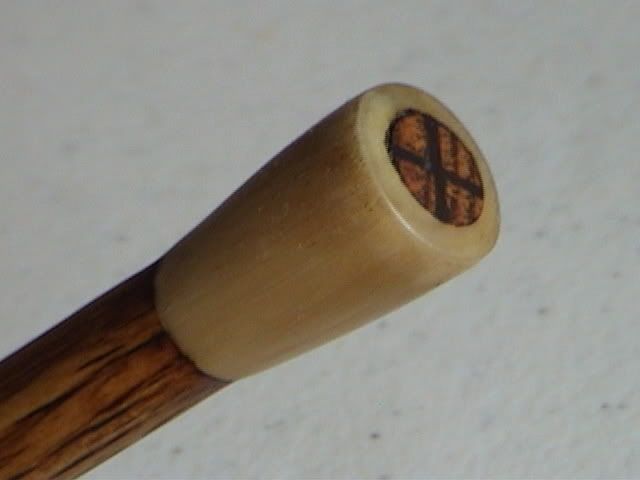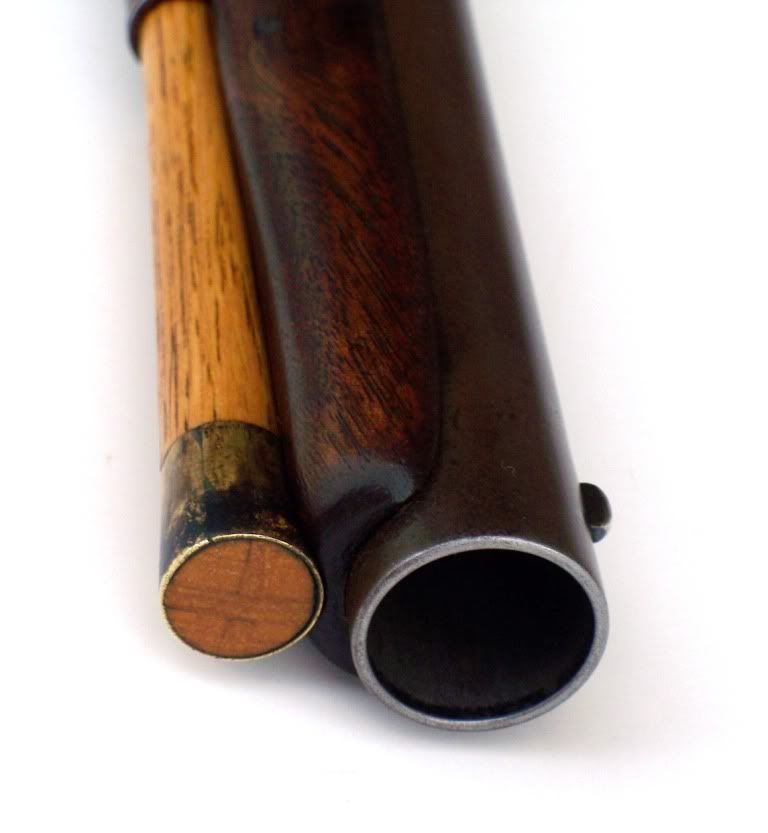I have seen footed arrows, and ornate Ramrods made with a slot and tongue, rather than the coned method.
You cut a wide tongue on the tip you want to put on the ramrod, then cut a similarly wide slot in the end of the ramrod shaft. Glue the two together. let dry. Pin the new tip to the rod, with crosspin(s), and more glue( I file nicks in the soft metal pins so that the glue has something to grab inside the pinhole), and then peen the ends of the soft pins down into the countersink you put in the wood. File and sand the tip and shaft to common size, and then finish with gunstock oil.
I have been using soft Nickle/copper brazing rod for pinning ramrod ferrules, handles and tips. Its tough, but also soft enough to peen very well without hard pounding. Soft iron/steel finishing nails- the ones with the very small heads-- can also be used, as can brass rods, or copper rods.
With these small sized holes, I just find a larger Drill bit- 1/4" for instance, and use it to knock the splinters off the edge of the pin holes in the wood on both sides, and use it to put a bit of a countersink to the mouths of the holes. I hold these larger bits in my hand, to turn in the holes in the wood shaft, and don't bother to mount them in a drill.
I have also seen ramrods with tips fixed to the shaft as the tips on cue-sticks for pool are made. The back end of the tip is turned to a small diameter shaft 1/4-3/8" long. A similar sized hole is then drilled into the shaft of the ramrod, or cue-stick. The tip is glued into the shaft. and allowed to dry. Sanding finished the outside dimensions and the stick is then coated with some kind of wood finish.
If Ramrod IS ONLY going to be used to LOAD a PRB down the barrel, and NEVER to clean the barrel, this last method is adequate enough. The Glue does not have enough strength, however, to withstand a lot of weigh or tension if the rod is to be used to PULL a wad, or stuck ball out of the barrel. :hmm:










